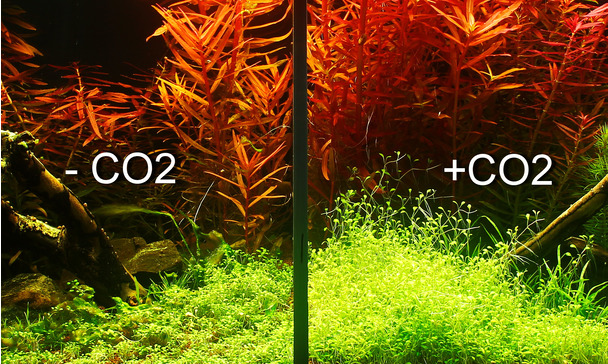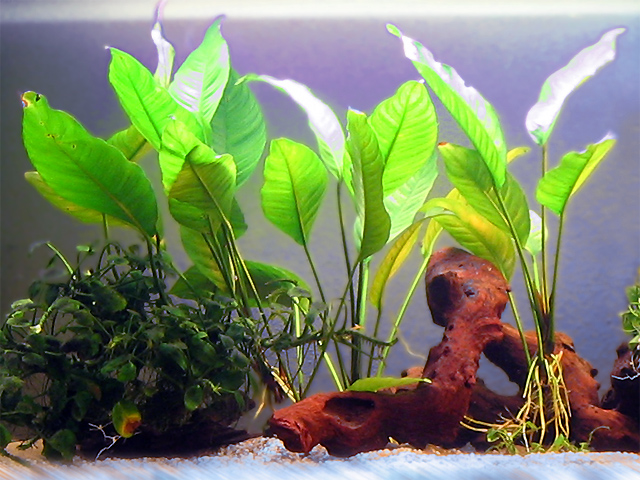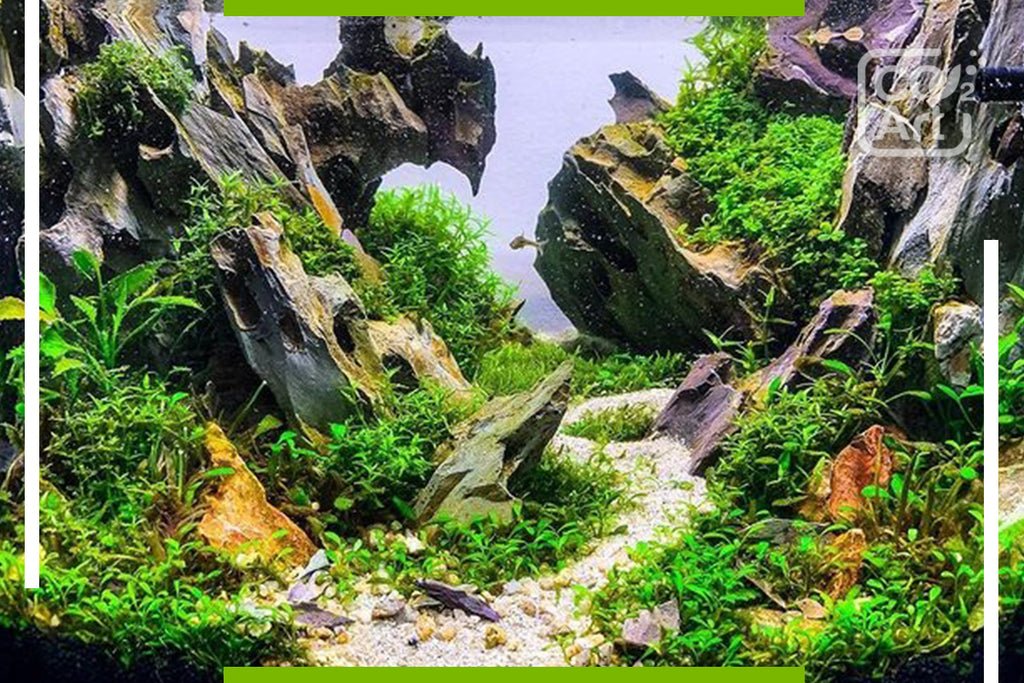Can aquarium plants survive without CO2? The short answer is yes, they can.
But there’s more to consider if you want them to thrive. Aquarium plants add beauty and health to your tank. They provide oxygen, help control algae, and offer shelter for fish. Many believe CO2 is essential for plant growth. But not all plants need it to survive.
Some species can live and grow well without added CO2. Understanding which plants can do this and how to care for them is key. In this post, we’ll explore the world of low-tech aquariums. We’ll discuss which plants can thrive without CO2 and how to create a healthy, balanced environment for them. Let’s dive in!
Importance Of Co2 In Aquariums
The importance of CO2 in aquariums cannot be overstated. CO2 is vital for the health and growth of aquatic plants. It helps plants photosynthesize, which is their way of making food. Without enough CO2, plants struggle to thrive and may even die. This can disrupt the balance of your aquarium, leading to other issues like algae growth.
Role Of Co2 In Plant Growth
CO2 plays a crucial role in plant growth. Plants use CO2 during photosynthesis to produce oxygen and glucose. This process is essential for their survival and growth. When aquatic plants have enough CO2, they grow faster and stay healthier. Healthy plants mean a more vibrant and balanced aquarium.
Natural Co2 Sources
There are natural sources of CO2 in aquariums. Fish and other aquatic creatures produce CO2 through respiration. Organic matter, like decaying plants and food, also releases CO2. These natural sources can sometimes provide enough CO2 for low-light plants. But for lush, thriving aquariums, additional CO2 is often necessary.
Low-tech Aquarium Setups
Are you curious about maintaining a beautiful aquarium without high-tech gadgets? Then, the low-tech aquarium setup might be your answer. This approach focuses on simplicity and natural balance. It’s perfect for beginners and those who enjoy a hands-off method. Let’s dive into the characteristics and benefits of low-tech tanks.
Characteristics Of Low-tech Tanks
Low-tech tanks are all about simplicity. They don’t rely on CO2 injection systems. Instead, they use natural methods to keep plants healthy. Here are some key characteristics:
- Low Light Intensity: Typically, low-tech tanks use less intense lighting. This reduces the need for extra CO2.
- Slow-Growing Plants: Plants like Java Fern, Anubias, and Cryptocoryne thrive in low-tech environments.
- Minimal Equipment: No need for high-tech gadgets. A simple filter and heater usually suffice.
- Natural Balance: These tanks rely on a natural balance between plants and fish.
Benefits Of Low-tech Aquariums
Low-tech aquariums offer many benefits. They are easy to maintain and cost-effective. Let’s explore these advantages:
- Cost-Effective: Without expensive CO2 systems, you save money.
- Low Maintenance: Fewer gadgets mean less upkeep. Weekly water changes and occasional pruning are enough.
- Beginner-Friendly: Ideal for those new to aquarium keeping. Simple setups reduce complications.
- Natural Look: Plants grow slowly, creating a more natural and serene environment.
Low-tech aquariums are a great way to enjoy a beautiful, natural setup without the hassle of high-tech equipment. They are perfect for beginners and those who prefer a more hands-off approach.
Co2-free Plant Choices
Choosing the right aquarium plants for your tank can be challenging, especially if you want to avoid using CO2. Fortunately, there are many beautiful and hardy plants that can thrive without the added CO2. These plants are ideal for beginners and those looking to maintain a low-tech aquarium. Let’s explore some popular CO2-free plant choices.
Popular Co2-free Plants
Many aquarium plants do not need CO2 to grow well. Here are some of the most popular options:
- Anubias: This plant is very hardy and can grow in low light conditions.
- Java Fern: It requires minimal care and can attach to rocks or driftwood.
- Cryptocoryne: Known for its variety of shapes and colors, it can adapt to different water conditions.
- Amazon Sword: This plant is great for providing cover and can grow quite large.
- Water Wisteria: It grows quickly and helps to oxygenate the water.
- Moss Balls: These are low-maintenance and help to reduce algae.
Growth Rates Without Co2
Plants that grow without CO2 may have slower growth rates, but they can still thrive. Here is a comparison of growth rates for some popular CO2-free plants:
| Plant | Growth Rate | Light Requirement |
|---|---|---|
| Anubias | Slow | Low |
| Java Fern | Slow | Low |
| Cryptocoryne | Moderate | Low to Medium |
| Amazon Sword | Moderate | Medium |
| Water Wisteria | Fast | Medium |
| Moss Balls | Very Slow | Low |
While these plants may not grow as quickly without CO2, they are still great choices for a low-maintenance aquarium. With proper care, they will add beauty and life to your tank.

Credit: www.co2art.us
Light Requirements
Aquarium plants need light to thrive, especially without CO2. Light acts as the primary energy source for photosynthesis. Ensuring proper light conditions is crucial for healthy plant growth.
Optimal Lighting Conditions
Plants need consistent light for at least eight hours daily. Use full-spectrum LED lights. These provide the necessary wavelengths for photosynthesis. Avoid direct sunlight to prevent algae growth.
Monitor the light intensity. Low-light plants require less intensity. High-light plants need brighter conditions. Adjust the light based on plant needs. Observe plant health and adjust the light if necessary.
Balancing Light And Nutrients
Balance light with nutrients for optimal growth. Over-lighting without nutrients can cause algae. Under-lighting can weaken plants. Use fertilizers to provide essential nutrients. This supports plant health and growth.
Maintain a consistent light schedule. Sudden changes can stress plants. Regularly check and maintain your lighting setup. Healthy plants contribute to a vibrant aquarium.
Nutrient Management
Managing nutrients is crucial for the health of aquarium plants, especially without CO2. Plants need essential nutrients to grow and thrive. This section will discuss the vital nutrients and the best fertilizer options for your aquarium plants.
Essential Nutrients For Plants
Aquarium plants need several essential nutrients to stay healthy. These include:
- Macronutrients: Nitrogen, Phosphorus, Potassium
- Micronutrients: Iron, Manganese, Zinc, Copper, Molybdenum, Boron
Macronutrients are needed in larger amounts. Micronutrients are required in smaller quantities but are equally important. Without these nutrients, plants may show signs of deficiency, like yellowing leaves and stunted growth.
Fertilizer Options
Choosing the right fertilizers is key to providing your plants with the nutrients they need. Here are some common options:
| Fertilizer Type | Description |
|---|---|
| Liquid Fertilizers | Easy to use and provide a quick nutrient boost. |
| Root Tabs | Ideal for rooted plants. Placed in substrate to release nutrients slowly. |
| Comprehensive Fertilizers | Contain both macronutrients and micronutrients. |
Liquid fertilizers can be added directly to the water. Root tabs are best for plants that take nutrients through their roots. Comprehensive fertilizers offer a balanced nutrient mix for overall plant health.
Regular nutrient management ensures that your aquarium plants remain healthy and vibrant, even without CO2.

Credit: www.jbl.de
Water Parameters
Understanding water parameters is crucial for aquarium plant health. Water parameters refer to the pH level, temperature, hardness, and cleanliness of the water. These factors play a significant role in the survival of aquarium plants. Even without CO2, maintaining proper water parameters can help plants thrive.
Ideal Ph Levels
Plants need specific pH levels to grow well. Most aquarium plants prefer a pH range between 6.5 and 7.5. This range helps plants absorb nutrients efficiently. Test the water regularly to ensure it stays within this range. Adjustments may be necessary to maintain the ideal pH level.
Maintaining Water Quality
Water quality is vital for plant health. Clean water supports nutrient uptake and prevents algae growth. Perform regular water changes to keep the water clean. Remove debris and uneaten food promptly. Use a good filtration system to maintain water clarity and quality.
Challenges Without Co2
Aquarium plants can survive without CO2. But they face many challenges. CO2 is vital for plant growth. Without it, plants may not thrive. They may grow slowly and look unhealthy. Let’s explore some common issues and ways to prevent algae growth.
Common Issues
Without CO2, plants struggle to photosynthesize. This leads to slower growth. Plants may also become weak and pale. They need CO2 to make food. Without it, they starve.
Another issue is nutrient deficiency. Plants need nutrients to grow. Without CO2, they can’t use these nutrients effectively. This can lead to yellow leaves and stunted growth.
Finally, plants without CO2 are more prone to diseases. Weak plants are easy targets for pests and fungi. This can further harm the aquarium’s ecosystem.
Preventing Algae Growth
Algae growth is a common problem. Without CO2, algae can take over. They thrive in low CO2 environments. They compete with plants for nutrients and light.
To prevent algae growth, use a good filtration system. Keep the water clean. Regular water changes help too. Remove any visible algae by hand.
Control the light in the aquarium. Too much light can encourage algae growth. Use a timer to ensure plants get the right amount of light.
Consider adding fast-growing plants. They can outcompete algae for nutrients. This helps keep algae under control.
| Challenge | Solution |
|---|---|
| Slow Growth | Regular pruning and nutrient dosing |
| Nutrient Deficiency | Use root tabs or liquid fertilizers |
| Algae Growth | Control lighting and clean regularly |
By addressing these challenges, your aquarium plants can survive without CO2. It requires more effort, but it’s possible.

Credit: www.co2art.us
Tips For Success
Many aquarists wonder if aquarium plants can thrive without CO2. While CO2 injection can boost plant growth, it’s not always necessary. With the right care, your plants can flourish in a low-tech, CO2-free setup. Here are some tips for success to help your plants grow beautifully.
Best Practices
Start with hardy plant species that don’t require CO2. Examples include Java Fern, Anubias, and Cryptocoryne. These plants are adaptable and grow well in low-tech tanks.
Use nutrient-rich substrates. Good substrate will provide essential nutrients. Choose options like soil-based or enriched substrates. This helps your plants access the nutrients they need to grow.
Maintain proper lighting. Use moderate lighting for 6-8 hours daily. Avoid high-intensity lights that can cause algae growth. Consistent lighting supports healthy plant growth.
Perform regular water changes. Changing 20-30% of the water weekly keeps the tank clean. It also ensures your plants have access to fresh nutrients.
Consider using liquid fertilizers. These can supplement nutrients not provided by the substrate. Look for products that contain potassium, iron, and trace elements.
Monitoring Plant Health
Observe your plants for signs of growth and color. Healthy plants should show new growth and vibrant colors. Pale or yellow leaves may indicate nutrient deficiencies.
Check for algae growth. Excessive algae can harm your plants. If you notice algae, reduce lighting and check nutrient levels.
Prune plants regularly. Trimming helps remove dead or dying leaves. It also encourages new growth and prevents overcrowding.
Test water parameters. Monitor pH, hardness, and nutrient levels. Balanced water conditions support plant health.
| Water Parameter | Ideal Range |
|---|---|
| pH | 6.5 – 7.5 |
| Hardness (dGH) | 4 – 12 |
| Nitrate (ppm) | 10 – 20 |
By following these tips, you can create a thriving, CO2-free aquarium. Your plants will grow healthily, adding beauty to your underwater world.
Frequently Asked Questions
Can Aquarium Plants Grow Without Co2?
Yes, some aquarium plants can grow without CO2. However, CO2 boosts growth and health. Low-light plants like Java Fern and Anubias are suitable for non-CO2 aquariums.
What Are The Best Low-tech Plants?
The best low-tech plants include Java Fern, Anubias, and Java Moss. These plants thrive without CO2 supplementation and are perfect for beginners.
How To Improve Plant Growth Without Co2?
To improve plant growth without CO2, use nutrient-rich substrate, provide adequate lighting, and perform regular water changes. Proper care enhances plant health.
Do All Aquarium Plants Need Co2?
No, not all aquarium plants need CO2. Many low-light plants can thrive without it. However, CO2 can significantly enhance their growth and appearance.
Conclusion
Aquarium plants can thrive without CO2. Choose hardy species for better results. Regular maintenance is crucial. Ensure proper lighting and nutrients. Low-tech tanks are great for beginners. Enjoy the natural beauty of your tank. Happy planting!





